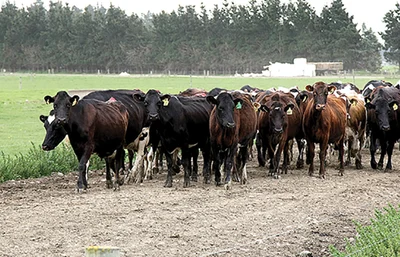Observations of a rural reporter

I’ve been in the job of rural reporter for the Ashburton Guardian for seven months now. I was asked by the editor to come up with some observations from my time covering the Mid Canterbury region for farming news. So here we go . . . These are in no specific order.
Compliance
Compliance and regulation are two words that make many farmers roll their eyes. The shed-load of rules and regulations to be aware of and act in accordance with are vast and cover things such as staff recruitment and employment, health and safety, animal welfare, water and effluent management, and more recently, greenhouse gasses.
Many farmers feel there is more “red tape” attached to farming nowadays than there used to be, which causes a heap of confusion and general uncertainty around long-term production. The reality is that this isn’t going to change guys – we need to keep up with the rest of the world.
Genetics
Probably my favourite thing to report on is stud breeding and animal genetics. This is my happy place. I’ll talk to a stud breeder any day.
Estimated Breeding Values (EBVs) fascinate me. These indicate the genetic value of an animal, and how it will perform as a parent, based on specific performance traits – half of which will be passed on to its progeny.
EBVs are published for a range of performance traits and are used in conjunction with just looking at the animal for such as structural soundness.
When using EBVs to help in animal selection farmers must find a balance between the different groups of traits and those traits that are particular to their breeding programme, markets and environment.
Nitrogen
Like compliance, nitrogen is a dirty word for farmers. The biggest source of nitrogen in our waterways is urine from farm animals. Nitrogen-rich urine can wash straight through soil and into the groundwater before plants have a chance to take it up as fertiliser.
On July 1, 2021, the Government introduced a cap on the application of synthetic nitrogen fertiliser for land grazed by livestock under the new Essential Freshwater package.
On grazed pasture, farmers can no longer apply more than 190kg of synthetic nitrogen per hectare per year (190kg N/ha/year) without resource consent. Farmers must also record synthetic nitrogen fertiliser use and report it back to Environment Canterbury each year.
Technology
The amount of technology involved with farming these days is staggering.
Today’s farmers regularly use sophisticated technologies such as robots, temperature and moisture sensors, aerial images, and GPS technology.
These advanced devices, precision agriculture, and robotic systems allow farmers to be more profitable, efficient, safer, and more environmentally friendly.
Something that really impresses me is variable rate irrigation or VRI. This allows the farmer to vary the rate of irrigation applied to suit the needs of their crop, soil type and farm operation.
By understanding and adjusting certain inputs and outputs, they can maximise their yield, minimise costs and reduce nutrient leaching and water loss.
Smarts
Farming is a multi-facet job with physical and academic requirements: the sheer level of knowledge required to farm at a high level is astounding.
Farmers today not only have to be experts on plants and animals, but they must also be computer literate, mechanically inclined, savvy in business, legal-minded and knowledgeable about world events. And they must be savvy with technology.
Farmers must also be politically astute because much of their farm income and operations are tied to government and local body policies and regulations; for instance if they are required to have a consent to farm because of heightened nitrogen levels.
Animal welfare
Animal welfare in agriculture is a vital part of New Zealand’s “brand” as an exporting country. Both here and globally consumers are expecting more and more transparency about where their food comes from.
Within society, there is a growing focus on the ethical treatment of animals, and farmers have to make sure that the whole industry is aiming to be above reproach.
The problem farmers face is: how can they collectively improve animal welfare in a practical and sustainable way? The aim is to meet the values and needs of global consumers and maintain a social licence to farm.
He Waka Eke Noa
The Primary Sector Climate Action Partnership – He Waka Eke Noa (HWEN), is a world first partnership between 13 industry partners, established in response to the Government’s proposal to price agricultural greenhouse gas emissions through the New Zealand Emissions Trading Scheme (ETS).
On May 31, HWEN submitted the primary sector’s final recommended approach to Government for an alternative emissions pricing framework.
Doing nothing is not an option – the Government has already decided to price agriculture emissions.
The HWEN partnership is our best option to design an alternative pricing approach which is more practical, and fair and will incentivise farmers to make positive changes.
Water
I love the dairy industry but this concerns me.
The quality of three-quarters of the monitored groundwater sites in Mid Canterbury is getting significantly worse.
It’s found there is not enough rain and river water in Canterbury to dilute nitrate pollution into acceptable drinking water standards.
Now, a study suggests every litre of milk produced in the region needs up to 11,000 litres of water to dilute the pollution from its production and that’s more than what is available.
An expert says there has been a “hands-off” approach to intensification of farming, there’s been no enforcement by regional councils, and very weak standards set by central government.
Endlessly debatable but where do we go from here?
- By Pat Deavoll
